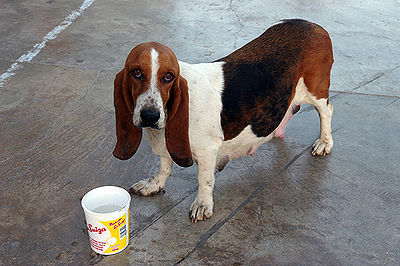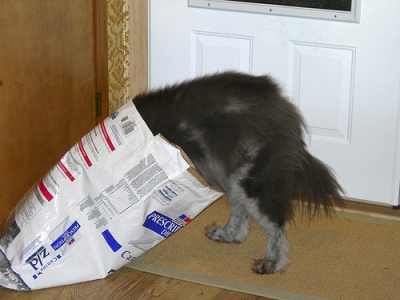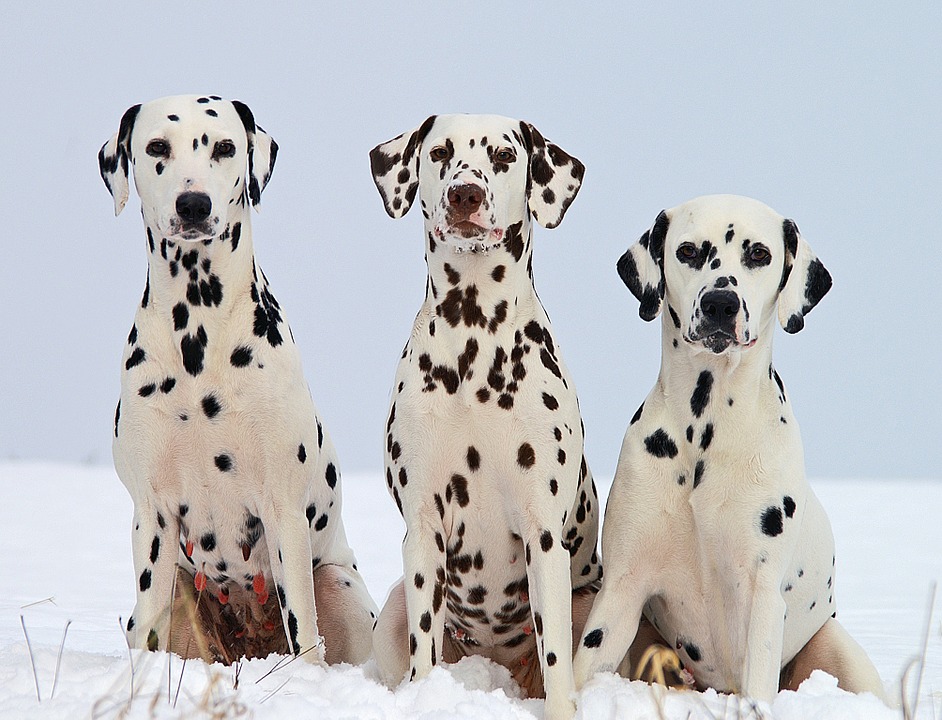
Pregnancy in dogs usually lasts 63 days, about 9 weeks. You can determine the due date counting from the date of mating.
There isn’t much change in the female dog for at least 4 weeks. You should consult your vet 3-4 weeks after mating. :Your vet can diagnose the pregnancy at this time, about 24-32 days. A simple blood test can confirm pregnancy. Try to avoid medicines and vaccines as they can be harmful to the pups. There are heartworm products approved for use during pregnancy and nursing. And Capstar and Revolution are flea products safe to use during pregnancy.
At 5-6 weeks, the pregnant dog will need 1/3 to 1/2 extra food over the amount being fed. Feed small amounts several times a day. The pups will occupy a lot of space and mom may fill up too quickly. Diet should include high quality protein, cheese, eggs and vitamins and other natural supplements. Extra calcium should not be added to the diet. Always check with your vet before adding something new to the diet.
Some dogs will have a light greenish discharge which is called uterovardin produced in the placenta. This is not a problem and sometimes decreases in the last 2 weeks of pregnancy. During birth it is present.
When exercising your dog, don’t allow her to become overtired. At 4 weeks into the pregnancy, exercise should not be strenuous. You can increase the number of walks while keeping them shorter.
As the time to give birth approaches there are signs to look for. Your dog’s temperature will lower slightly in the last weeks and drop further the last 24 hours before giving birth or whelping as it is called. A couple of hours before whelping there can be a sudden discharge of green mucus, a sign that the placenta is beginning to separate. It may be necessary to x-ray your dog to determine how many pups there are and their size.
It’s a good idea to prepare a place for whelping early enough so that your dog is used to it. There are things to have ready before your dog gives birth. Set up a box or fenced off area where your dog can comfortably give birth. Line the area with newspapers or towels. Trim the hair from the area around the nipples and vulva. Have your vet’s emergency telephone number ready. Have clean towels on hand. Choose a safe disinfectant for your hands. Cotton thread and scissors in case help is needed with the umbilical cord. Have fresh bedding prepared for afterward. It’s a good idea to have a notebook and pen handy to record the event. Call your vet and let him know the birth is imminent.
In almost all cases the mother dog will handle things just fine. However if you suspect your dog might experience a difficult birh and may need a cesarean, make an appointment with your vet. It’s best to be prepared in this case. A daytime visit assures that your vet’s staff is available to help. But anytime your dog is in distress, treat it as an emergency and contact your vet immediately.
Most births are normal and your dog can handle the situation without any assistance. Your dog will become restless, often pacing and not being able to relax. Her pulse rate will increase and she will pant a lot. She will clean herself frequently and will experience contractions.
With a first litter, a dog may experience 3-4 hours of straining before the first puppy appears. The placenta may come out with the puppy or follow as long as 15 minutes later. The dog will clean the puppy licking it vigorously and chew off the umbilical cord. The stimulated puppy will seek a nipple and immediately begin to feed. The next puppy can come quickly or up to 2 hours later. If the time between the first and second puppies is longer, call your vet for advice. Especially with large litters many dogs will take a rest period in the middle of whelping.
If you need to contact your vet, having the following information ready will help: breed and age of your dog, date of mating if available, number of days since mating, when did she last eat, is there a vaginal discharge, has she been sick recently, is she vomiting, showing signs of distress.
There are ways you can help if there is a problem. If your dog ignores a newborn, you can clear the membranes from the nose and rub the pup wih a clean towel to stimulate it. If you must cut the cord, with clean hands , tie cotton thread tightly around the cord about an inch away from the pup’s body. Without pulling on the cord, cut with antiseptic washed scissors, a further half inch away from the thread.
Some dogs will have a slightly bloody or green discharge for 24 hours after whelping.
A nursing dog requires more food than normally given along with vitamin and mineral supplements. Ask your vet for recommendations. Check the mammary glands regularly for red, swollen areas. Call your vet if all does not appear normal.
In the case of a cesarean, check the incision several times daily.
Always consult your vet when you notice something unusual.



